Eastern Golden Eagle: The Appalachian Mountains' Little-known Apex Predator
The Golden Eagle is a widely recognized and much-revered icon of America's western landscapes. It comes as a surprise to many people to learn that there is also a population of Golden Eagles in the East. But because these birds are more elusive and generally scarce, they tend to fly below the public's radar.
Meet the Eastern Golden Eagle
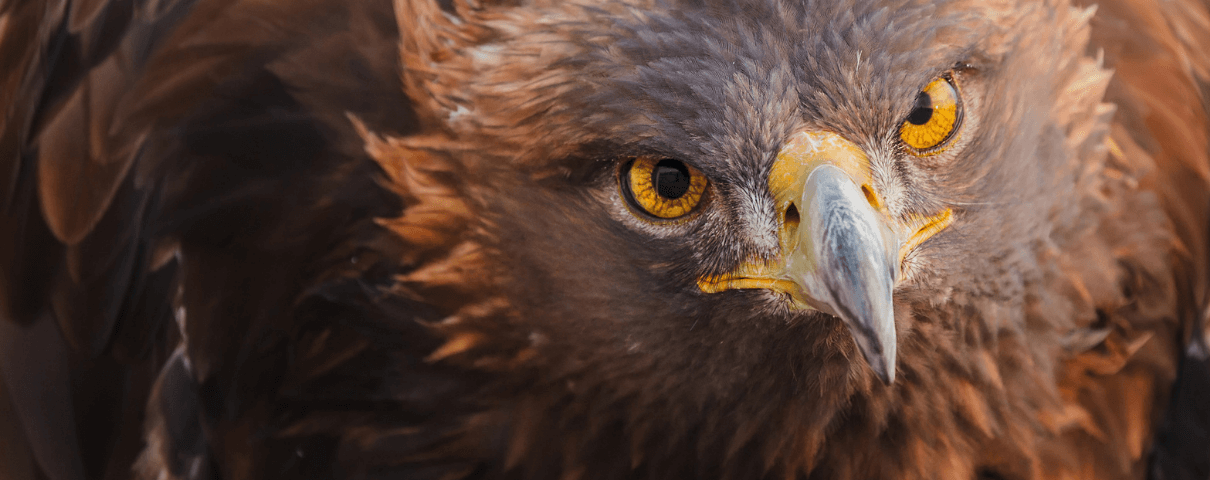
Because of their low profile, eastern Golden Eagles are often overlooked. Yet these complex birds are an important part of eastern ecosystems. They also face a suite of threats and are in need of our attention.
To introduce these fascinating birds, we've answered some of the most common questions about eastern Golden Eagles below.
Where Do Eastern Golden Eagles Live?
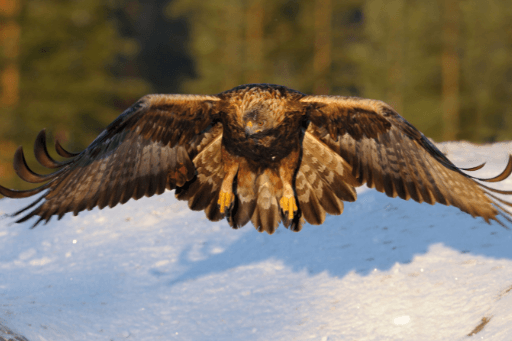
Eastern Golden Eagles' core range stretches from breeding grounds in northeastern Canada southward to their winter stronghold in the Appalachian Mountains. Lower densities of wintering birds can be found scattered throughout the eastern U.S.
Golden Eagles formerly nested in the northeastern U.S., most notably in Maine and New York, in what was once the southern edge of the species' range. The last documented nesting attempt by naturally occurring birds in the eastern U.S. was in Maine in 1996.
What Characterizes Eastern Golden Eagle Habitat?
Unlike their counterparts in the West, eastern Golden Eagles spend much of their time in forested landscapes. Steep slopes and cliffs are important habitat features for these birds – they provide updrafts for soaring, which saves energy. Eastern Golden Eagles nest on cliffs or in trees.
Where do Eastern Golden Eagles Migrate?
Migratory routes primarily follow the Appalachian Mountains, though a smaller number of birds travel through the Midwest.
Researchers have identified patterns in eastern Golden Eagles' migration. For example, migrating birds are more likely to follow the “Ridge and Valley” portion of the Appalachian Mountains during spring migration. These distinct ridges, which are generally oriented from northeast to southwest, create updrafts and provide ideal migratory routes for Golden Eagles and other raptors.

What do Eastern Golden Eagles Eat?
Carrion, rabbits, and other medium-sized mammals, along with larger birds (such as grouse) are typical prey for eastern Golden Eagles on both breeding and wintering grounds. Waterfowl form a notable portion of this population's summer diet, while the birds less frequently take prey as large as Wild Turkeys and young White-tailed Deer on wintering grounds.
How Many Eastern Golden Eagles Are There?
Determining eastern Golden Eagle populations has proved a consistent challenge due to the fact that breeding occurs in remote locations where access is limited.
A 2012 estimate placed the population of eastern Golden Eagles at 1,000 to 2,500 birds, but a subsequent and more data-based estimate indicates the number may be closer to 5,000. One study found that approximately 5,000 birds migrate through Pennsylvania alone, and noted that another 300 to 500 birds are documented in other parts of the eastern U.S. during migration.
In the early 1900s, Golden Eagles were widely persecuted, and the harmful effects of the pesticide DDT contributed to population declines in subsequent decades. Thanks to environmental legislation, conservation efforts, and the banning of DDT, Golden Eagle populations increased in the latter portion of the 20th century. Current estimates suggest that the eastern population is probably stable.
Are Eastern Golden Eagles Endangered?
Golden Eagles are covered by the Bald and Golden Eagle Protection Act and Migratory Bird Treaty Act, but are not listed under the Endangered Species Act (ESA). However, the relatively small size of the eastern Golden Eagle's population, coupled with persistent threats and the difficulty of studying these birds on their breeding grounds, raises a red flag for conservationists.
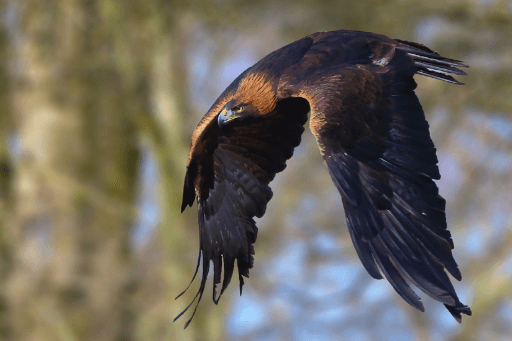
Studies have shown that eastern Golden Eagles are genetically distinct from other North American Golden Eagle populations. However, the difference does not appear to be enough to warrant status as a subspecies. To date, it has not been formally considered whether the population warrants ESA listing.
What Threats do Eastern Golden Eagles Face?
The key threats to eastern Golden Eagles are common to many raptor species. They include intentional shooting and poisoning, collisions with wind turbines and other infrastructure, and habitat loss. An unusual threat to this population is incidental capture in leg-hold traps, when eagles grab trap bait intended for furbearers.
Lead poisoning from accidental ingestion of lead ammunition is particularly problematic and difficult to resolve. Research is underway to identify effective mitigation measures for this widespread problem, but until a solution is found, lead will continue to take a toll on a wide variety of scavenging birds.
Are Wind Turbines a Threat to Golden Eagles?
Golden Eagles' vulnerability to collisions with wind turbines is well-documented. At the Altamont Pass Wind Resource Area in California, wind turbines were once estimated to kill 67 birds each year. That would mean that more than 2,000 Golden Eagles have been killed at this facility alone. Researchers have found that eagle populations at Altamont Pass are maintained only by the arrival of birds from other parts of the region.
A recent study found that the Golden Eagle is one of five raptor species at risk of population-level declines due to wind energy development. This is a key threat to the species, and one that is rapidly growing.
How Do Wind Turbines Impact Eastern Golden Eagles?
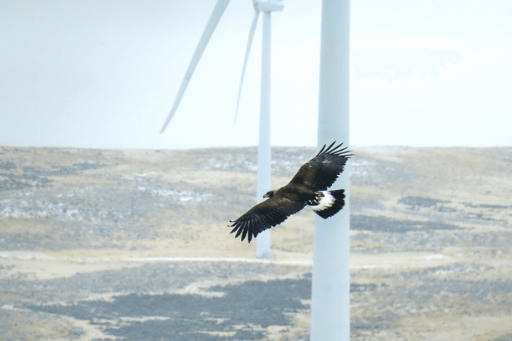
Unfortunately, poorly sited wind turbines are also a growing threat to the eastern population of Golden Eagle. The Appalachian ridgelines, cliffs, and steep slopes that the birds use are also some of the most attractive locations for wind energy development in the eastern U.S. This creates conflict, too often to the birds' detriment.
A 2012 study found that eastern Golden Eagles fly at lower altitudes during local movements (such as daily foraging) than during migratory flights. The flight altitude for local movements was predominantly within the rotor zone of wind turbines, creating high potential risk of collisions during day-to-day movement, if turbines are improperly placed.
In the same study, Golden Eagles used locations near industrial-quality winds more frequently than more distant sites. Further, eagle's lower-altitude local flights occurred closer to locations with industrial-quality winds than migratory flights.
Another study found that among eastern Golden Eagles tracked in Pennsylvania, the vast majority flew through high-risk areas at least once.
Conserving Eastern Golden Eagles
With its small population size and host of challenges, including the growing threat of wind energy development, the eastern Golden Eagle needs our attention. Luckily, it has a loyal following – the Eastern Golden Eagle Working Group is a dedicated group of researchers and conservation biologists who are working hard to learn more about this unique bird and to take steps to protect it.
It's clear that we need to be smart about wind turbine placement in the Appalachians, and to keep these structures out of the most important places for eastern Golden Eagles.
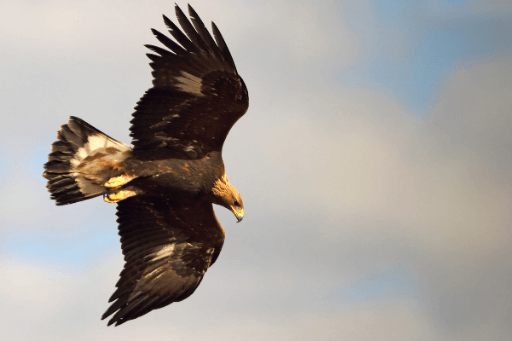
With the right public policy, wind energy planning practices, and on-the-ground conservation action, there is reason to hope that more of us can get to know and appreciate this amazing bird.
Additional Resources
U.S. Fish and Wildlife Service's Eagle Management page
The Eastern Golden Eagle Working Group website
The Conservation Science Global page on Eastern Golden Eagles
The Hawk Migration Association of North America
The Hawk Mountain website
The Peregrine Fund website
 | Joel Merriman is American Bird Conservancy's Bird-Smart Wind Energy Campaign Director. |


















































